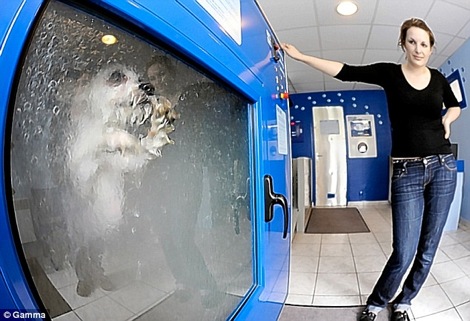Sometimes the washer finishes its cycle and leaves the fabric softener compartment full of water. The fact that the fabric softener has gone, and been replaced by water shows that the function has worked. The water is left behind due to a blockage, or a missing siphon tube.

How fabric softener compartment works

This invention relates to a slot machine which comprises one main machine, and a plurality of subordinate machines connected to the main machine. Each subordinate machine comprises a slot, detecting means for sensing the coins betted in; and coin paying-out means. The main machine comprises control means for starting the game in response to an output of the detection means of the. Place it directly into the compartment drawer of your washing machine – you should consult you washing machine manual to learn which is the correct compartment to use. Place the powder in a mesh bag directly in the drum to allow it to dissolve quicker. Always check the instructions on your detergent first to make sure it can be used this way. Place it directly into the compartment drawer of your washing machine – you should consult you washing machine manual to learn which is the correct compartment to use. Place the powder in a mesh bag directly in the drum to allow it to dissolve quicker. Always check the instructions on your detergent first to make sure it can be used this way.

Here’s how it is flushed into the drum. The small fabric softener compartment in the soap dispenser drawer has a plastic cap or tube at the back. When the time comes for the softener (conditioner) to be released, cold water runs into the small compartment. This flushes the softener over the top and down the dispenser into the drum.
When the water flow has turned off the compartment is left momentarily full of water. This unwanted water should automatically siphon up the inside of the tube and into the drum. Siphoning is triggered when water, or the fabric softener spills over the top of the compartment.
What causes water to be left?
This tube often gets blocked by the fabric softener itself. If you remove the dispenser drawer and take off the cap or device you can give the whole thing a good clean out. (Can’t get the drawer out? See link at bottom of article). Make sure you clean through the hole in any tube leading through to the bottom of the drawer. If any part is missing, the siphoning will not occur.
Basic Washing Machine Sale
To test the function, hold the soap drawer under a tap and allow water to fill the fabric compartment to overflowing. When you turn off the tap, hold the drawer steady and level. The remaining water should slowly siphon out of the hole under the cap and run out from the bottom of the drawer.
If everything is clean, and the water drains out ok when doing the above test, but there is still some water left in the fabric softener compartment at the end of the cycle then check the rest of this article for more ideas..
Get your appliance repaired
Still leaving water in softener compartment?
It shouldn’t be possible for the compartment to be left full of water if the compartment is cleaned and tested as described above. But if there’s only a small amount of water left inside try ensuring the washing machine is level and not tilting towards you. Make sure the washer is level across front to back as well as side to side.
The only other explanation I can think of is that stray water could be getting into the compartment after the fabric conditioner has been washed out – but not enough to fill to overflow which would start the siphoning process and remove it. If you suspect this check out this article for details about deflected water inside the soap dispenser – Fabric softener taken out too soon. You could also try adjusting the cold water pressure on the washing machine tap to see if it makes any difference.
More fabric softener articles and problems
Comments Disabled
Sorry, comments on this topic have been closed. Keep scrolling to read existing comments, which may contain more advice and help.
Another day, another appliance failure. It is time to replace a washing machine. The space into which this slots is kind of tight, so it would be good to stay within the 27×27″ footprint that was formerly standard before (a) Americans got bigger, and (b) laundry machines got bigger via front load designs.
Washing Machine Dealers
There are some top loading machines that still fit the old footprint. Supposedly the latest and greatest are impeller-based and don’t have the agitator spindle in the middle. This is an attractive idea, at least, since it would seem to be better for loading in bulky sheets, towels, etc., and not having them get tangled around the agitator. On the other hand, there are a lot of negative reviews of these machines online.
The dryer duct in our apartment is long and windy, thus making the dryer somewhat inefficient. The higher spin speed of the impeller-based machines is therefore attractive.
Does anyone have experience with this new breed of impeller-based top-loading washing machines? The ones that would seem to fit the space best are from Maytag and GE.
How about front loader versus these new-design top loaders?
Related:
Washing Machine Wikipedia
Unrelated: a backhoe and/or laundry service in Anguilla, from 2002…